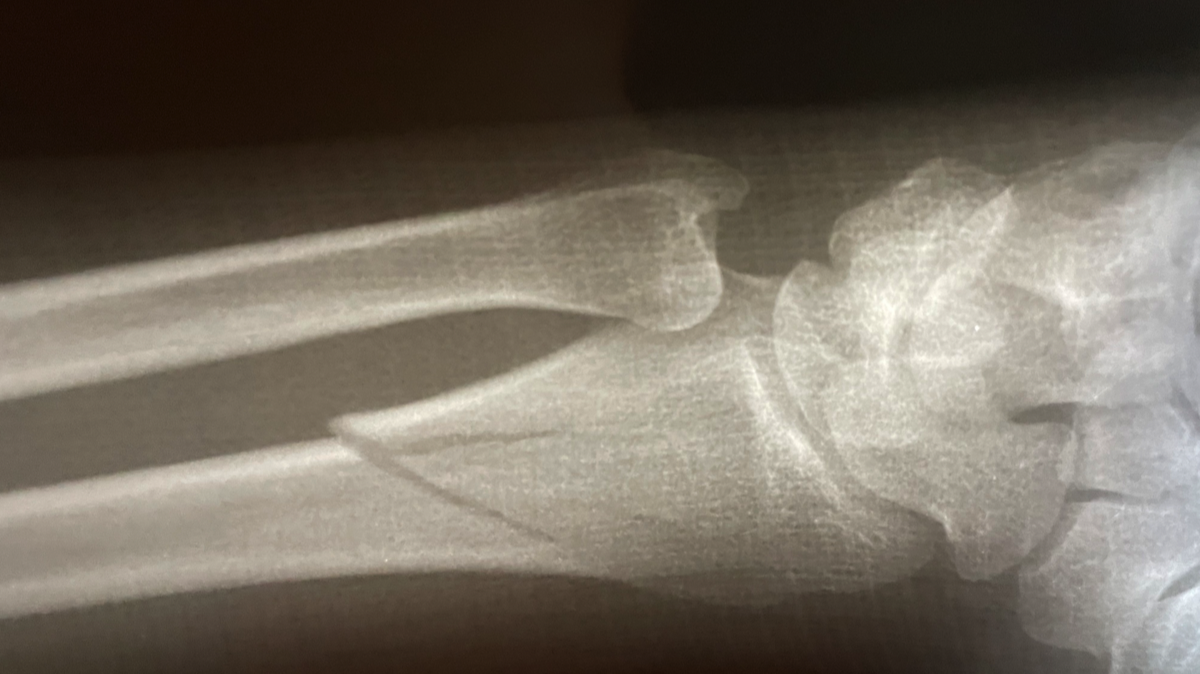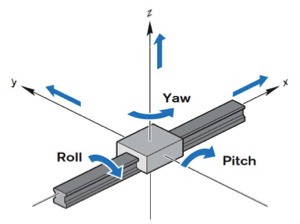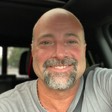
Getting My Wing Unclipped
The Road Back...
In February of 2011, I broke my arm in four places while moving a trailer in preparation for a youth retreat which was to take place that evening. As I was manually moving the trailer into position to align with the vehicle's hitch, my feet slipped out from me as I stepped onto a patch of black ice. The combination of the weight from the trailer dolly I was using (something new to me and mandated by my employer, rather than lifting the trailer with my legs), the trailer, and my own body weight combined together to create an impact on my left arm just above the wrist when the steel post of the dolly impacted my arm with the force of those combined weights.
The pain was immediate and unique. I felt the vibration of the break clear up into my neck. As I lay on the cold ground experiencing the sudden physical and experiential shock, the 1600-pound-plus trailer quickly picked up momentum as it rolled in my direction, about to run me over or —at the very least—pin me to the ground. I quickly scooped up my injured arm and barrel-rolled two or three times out of the way of the trailer which crashed into a parking barrier twenty feet or so from where I lay.
While the details of the events which immediately followed are worthy of telling (and somewhat amusing, even!), my purpose for sharing today is to talk about the aftermath and recovery.
The pain was immediate and unique. I felt the vibration of the break clear up into my neck. As I lay on the cold ground experiencing the sudden physical and experiential shock, the 1600-pound-plus trailer quickly picked up momentum as it rolled in my direction, about to run me over or —at the very least—pin me to the ground. I quickly scooped up my injured arm and barrel-rolled two or three times out of the way of the trailer which crashed into a parking barrier twenty feet or so from where I lay.
While the details of the events which immediately followed are worthy of telling (and somewhat amusing, even!), my purpose for sharing today is to talk about the aftermath and recovery.

While the bone was healing and I was still wearing a cast, I began to develop a burning sensation on the bottom part of my wrist—away from the area of the fractures—that gradually became quite intense. The initial thought was that the cast was too tight or that the underlying padding may have doubled up producing additional pressure. This diagnosis proved incorrect, as the problem not only persisted after I no longer was required to wear the cast, but it continued to increase in severity despite physical therapy and additional exams, MRI's and fluoroscopy. A series of specialists could not determine the source of my pain.
On top of this, my grip strength was greatly reduced. At times, I would experience an unexpected lightning bolt of pain through the wrist when I was holding something which would cause me to lose my grasp completely and recoil in pain as whatever object I was holding crashed to the floor. We lost more than one plate and took many drinking glasses before I conceded my defeat and began ultra-favoring my already dominant right hand.
The greatest impact on my life-enjoyment, however, was that I could no longer play guitar for more than 10-15 minutes at a time. If I played more than once during any given week, I would not be able to do so for several more weeks. Eventually, I gave up playing almost entirely, only trying for a few minutes once every 4-6 months, until I one about three years without playing at all.
I was never what many would consider a 'gifted' guitar player. I've always thought of myself as an advanced novice at best. But I absolutely loved every opportunity I had to play, and now that was gone. Because a team of specialists determined that my wrist now qualified as 'permanently partially-disabled' because of the degrees to which it had disfigured (noticeable in the mechanics, but not to the naked eye), it was presumed that the pain I was experiencing was now part of my ongoing experience and could not be treated.
For almost ten years, I experienced continuous pain to varying levels of toleration. I no longer played guitar. I seldom used my left hand for anything which required significant grip. Game over, move on, I thought.
Then, after a series of nerve induction tests on my arm delivered inconclusive results, my brand new massage therapist suggested we try treating my wrist with a series of stretches and massage therapy which focussed upon my neck and chest. Since years of attempts had not produced any results, and since every massage I received from Karen had left me feeling both relaxed and invigorated (save for my wrist), I said why not? So starting with twice a week for two weeks and moving to once a week for two months, Karen focussed her attention to my chest and neck, as I employed stretches and foam rolling in the mornings and evenings. Karen's belief was that the pain I was experiencing had nothing to do with the fractures themselves, but with the added stresses and tensions placed upon my body by the cast and sling and how I guarded my arm; what she identified as thoracic outlet syndrome.
At one point midway through massage therapy, the collarbone on my left side produced a loud popping sound as my neck and shoulder were being manipulated. A warm, tingling sensation traveled down my arm into my fingertips. When the massage was over, the pain in my wrist was gone. Entirely. For the first time in years and years. At the end of that week, I picked up my guitar once again, and I played for almost two hours. The only thing that stopped me was the lack of calluses on my fingertips and how raw they had become.
So now, more than twelve years since I broke my arm, I am teaching myself once again how to play guitar, and I am playing, now, with probably more enjoyment than I ever have. Yes, my voice has aged and my fingers don't move like they used to, but the joy I feel playing and singing again this is aged—being able to do again something that was lost to me for so long a time (and what I thought would be for the rest of my earthly-days)—has removed much of my insecurities and hinderances to share my joy with others. Hence, my dabbling to record songs for my own enjoyment and (possibly) your amusement.
If you get a chance, drop in to my Open Mic Night page and take a listen. Be kind and leave a tip if so inclined. Thank you!
On top of this, my grip strength was greatly reduced. At times, I would experience an unexpected lightning bolt of pain through the wrist when I was holding something which would cause me to lose my grasp completely and recoil in pain as whatever object I was holding crashed to the floor. We lost more than one plate and took many drinking glasses before I conceded my defeat and began ultra-favoring my already dominant right hand.
The greatest impact on my life-enjoyment, however, was that I could no longer play guitar for more than 10-15 minutes at a time. If I played more than once during any given week, I would not be able to do so for several more weeks. Eventually, I gave up playing almost entirely, only trying for a few minutes once every 4-6 months, until I one about three years without playing at all.
I was never what many would consider a 'gifted' guitar player. I've always thought of myself as an advanced novice at best. But I absolutely loved every opportunity I had to play, and now that was gone. Because a team of specialists determined that my wrist now qualified as 'permanently partially-disabled' because of the degrees to which it had disfigured (noticeable in the mechanics, but not to the naked eye), it was presumed that the pain I was experiencing was now part of my ongoing experience and could not be treated.
For almost ten years, I experienced continuous pain to varying levels of toleration. I no longer played guitar. I seldom used my left hand for anything which required significant grip. Game over, move on, I thought.
Then, after a series of nerve induction tests on my arm delivered inconclusive results, my brand new massage therapist suggested we try treating my wrist with a series of stretches and massage therapy which focussed upon my neck and chest. Since years of attempts had not produced any results, and since every massage I received from Karen had left me feeling both relaxed and invigorated (save for my wrist), I said why not? So starting with twice a week for two weeks and moving to once a week for two months, Karen focussed her attention to my chest and neck, as I employed stretches and foam rolling in the mornings and evenings. Karen's belief was that the pain I was experiencing had nothing to do with the fractures themselves, but with the added stresses and tensions placed upon my body by the cast and sling and how I guarded my arm; what she identified as thoracic outlet syndrome.
At one point midway through massage therapy, the collarbone on my left side produced a loud popping sound as my neck and shoulder were being manipulated. A warm, tingling sensation traveled down my arm into my fingertips. When the massage was over, the pain in my wrist was gone. Entirely. For the first time in years and years. At the end of that week, I picked up my guitar once again, and I played for almost two hours. The only thing that stopped me was the lack of calluses on my fingertips and how raw they had become.
So now, more than twelve years since I broke my arm, I am teaching myself once again how to play guitar, and I am playing, now, with probably more enjoyment than I ever have. Yes, my voice has aged and my fingers don't move like they used to, but the joy I feel playing and singing again this is aged—being able to do again something that was lost to me for so long a time (and what I thought would be for the rest of my earthly-days)—has removed much of my insecurities and hinderances to share my joy with others. Hence, my dabbling to record songs for my own enjoyment and (possibly) your amusement.
If you get a chance, drop in to my Open Mic Night page and take a listen. Be kind and leave a tip if so inclined. Thank you!

